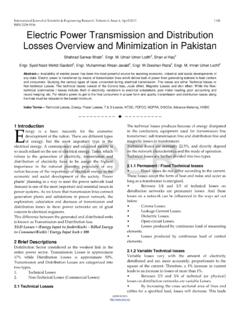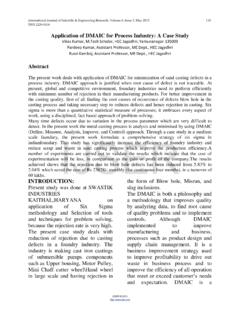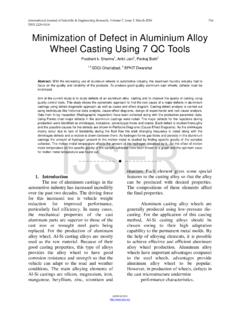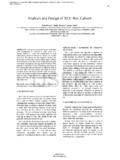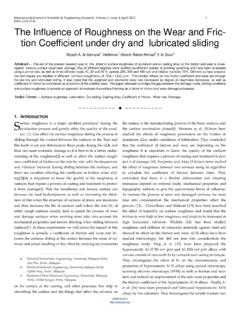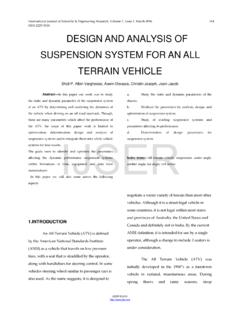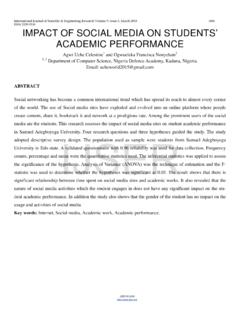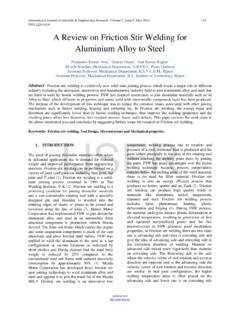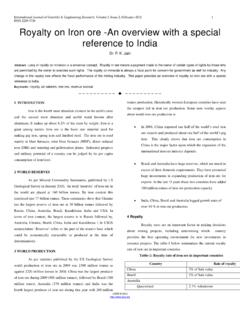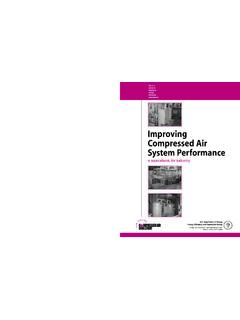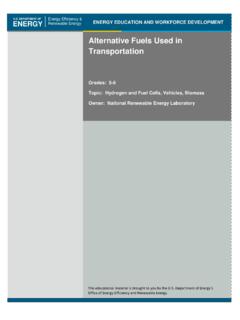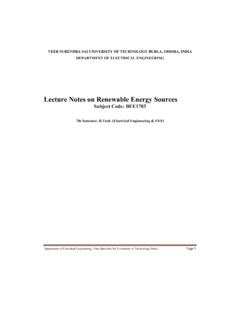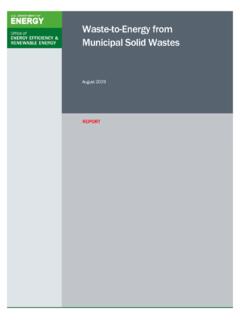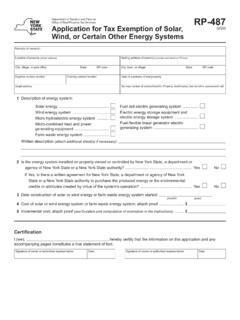Transcription of Regenerative Braking Systems (RBS) - IJSER
1 Regenerative Braking Systems (RBS) Pratik Bhandari, Shubham Dubey, Sachin Kandu, Rupesh Deshbhratar Abstract Most brakes commonly use friction between two surfaces pressed together to convert the kinetic energy of the moving object into heat, though other methods of energy conversion may be employed as all the energy here is being distributed in the form of heat. Regenerative Braking converts much of the energy to electrical energy , which may be stored for later use. Driving an automobile involves many Braking events, due to which higher energy losses takes place, with greater potential savings.
2 With buses, taxis, delivery vans and so on there is even more potential for economy. As we know that the Regenerative Braking , the efficiency is improved as it results in an increase in energy output for a given energy input to a vehicle. The amount of work done by the engine of the vehicle is reduced, in turn reducing the amount of energy required to drive the vehicle. The objective of our project is to study this new type of Braking system that can recollect much of the car s kinetic energy and convert it into electrical energy or mechanical energy .
3 We are also going to make a working model of Regenerative Braking to illustrate the process of conversion of energy from one form to another. Regenerative Braking converts a fraction amount of total kinetic energy into mechanical or electrical energy but with further study and research in near future it can play a vital role in saving the non-renewable sources of energy . Keywords: Regenerative , Braking , Hybrid vehicles, Kinetic energy recovery system ( ), Flywheel, Motor, Hydraulic Power INTRODUCTION A brake is a mechanical device that inhibits motion by absorbing energy from a moving system .
4 It is used for slowing or stopping a moving vehicle, wheel, axle, or to prevent its motion, most often accomplished by means of friction. The term Braking in a moving vehicle means the application of the brakes to reduce its speed or stop its movement, usually by depressing a pedal. The Braking distance is the distance between the time the brakes are applied and the time the vehicle comes to a complete stop. In Braking Systems on conventional vehicles, friction is used to counteract the forward momentum of a moving vehicle.
5 As the brake pads rub against the wheels or a disc that is connected to the axles, excessive heat energy is created. This heat energy dissipates into the air, wasting as much as 30 percent of the vehicle's generated power. Over time, this cycle of friction and wasted heat energy reduces the vehicle's fuel efficiency. More energy from the engine is required to replace the energy that was lost by Braking . Most of it simply gets released in the form of heat and becomes useless. That energy , which could have been used to do work, is essentially wasted.
6 The solution for this kind of this problem is Regenerative Braking system . This is a new type of Braking system that can recollect much of the car & kinetic energy and convert it into electrical energy or mechanical energy . The energy so produced can then be stored as mechanical energy in flywheels, or as, electrical energy in the automobile battery, which can be used again There are 7 multiple methods of energy conversion in RBSs including spring, flywheel, electromagnetic and hydraulic. More recently, an electromagnetic-flywheel hybrid RBS has emerged as well.
7 Each type of RBS utilizes a different energy conversion or storage method, giving varying efficiency and applications for each type. The effect of Regenerative brakes is less at lower speeds as compared to that at higher speeds of vehicle. So the friction brakes are needed in a situation of _____ Pratik Bhandari, Shubham Dubey, Sachin Kandu, are pursuing (Mechanical Engineering) University of Mumbai, India Prof. Rupesh Deshbhratar (Heat Power) International Journal of Scientific & Engineering Research, Volume 8, Issue 2, February-2017 ISSN 2229-5518 71 IJSER 2017 Regenerative brake failure, to stop the vehicle completely II.
8 CONVERSION OF KINETIC energy TO ELECTRICAL energy USING MOTOR The most common form of Regenerative brake involves using an electric motor as an electric generator. The working of the Regenerative Braking system depends upon the working principle of an electric motor, which is the important component of the system . Electric motor gets activated when some electric current is passed through it. But, when some external force is applied to activate the motor (during the Braking ), then it behaves as a generator and generates electricity.
9 This means that whenever motor runs in one direction, the electric energy gets converted into mechanical energy , which is then used to accelerate the vehicle and whenever the motor runs in opposite direction, it performs functions of a generator, which then converts mechanical energy into electrical energy , which makes it possible to utilize the rotational force of the driving axle to turn the electric motors, which results in regenerating electric energy for storage in the battery and simultaneously reducing the speed of the car with the Regenerative resistance of the electric motors.
10 This electricity is then used for recharging the battery Fig 1: Motor-Generator RBS III. FLYWHEEL RBS A flywheel is component which is used to store mechanical energy and then release the stored energy when needed for acceleration. Flywheel is a heavy, high-speed rotating disc that builds up kinetic energy as it spins. The amount of energy stored depends upon how heavier it is and how fast it rotates. Heavier weight and faster rotation results in higher energy storage. We can relate it to a discus thrower in the Olympics.
